Sometime in the late 1970s and early in my natural resources career, I secured a copy of Aldo Leopold’s Round River, a collection of essays edited by his son, Luna Leopold…
Walking, Reading, Interpreting and Understanding the Land: Becoming a Land Doctor
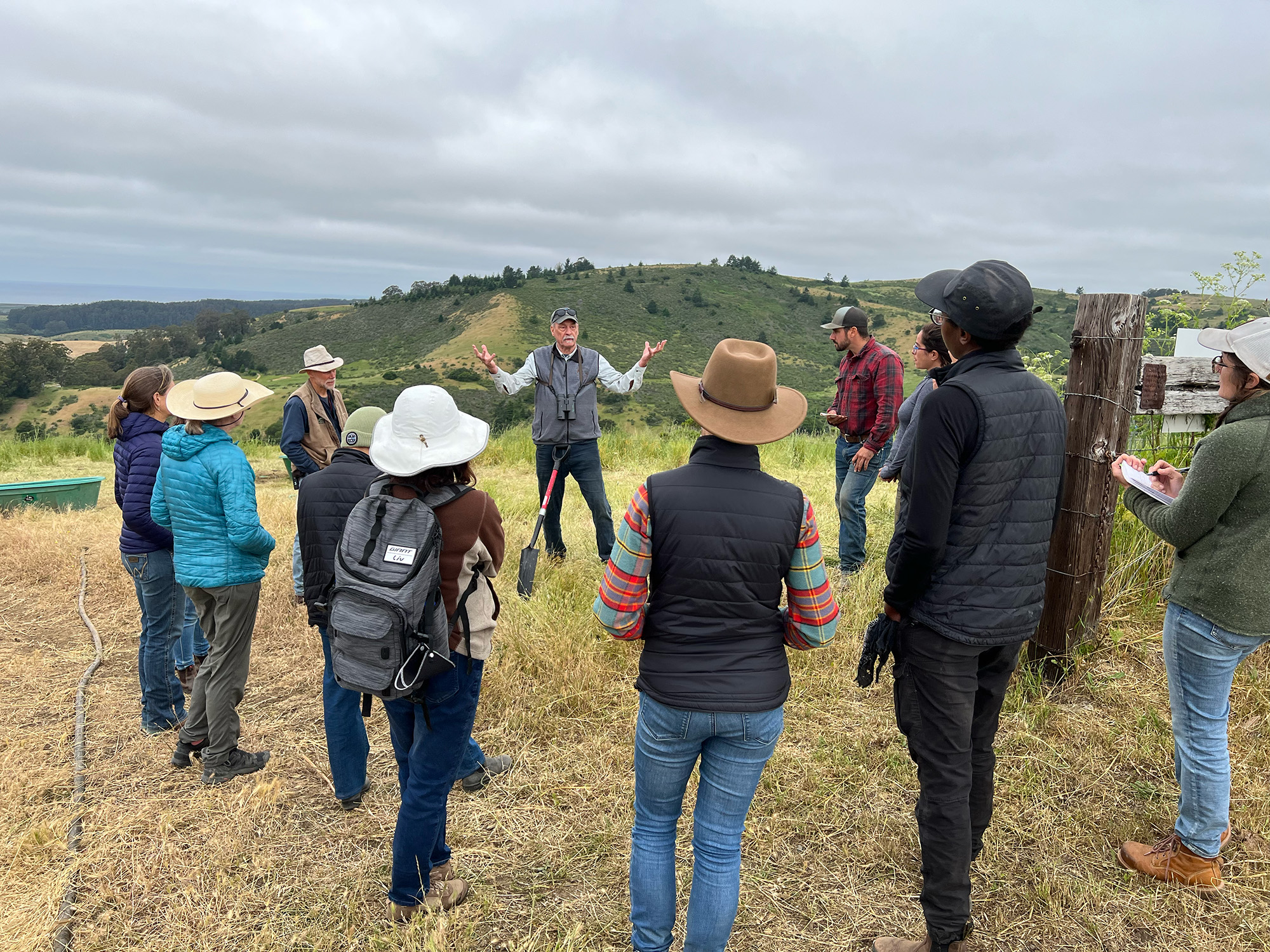
Photo by William Milliot
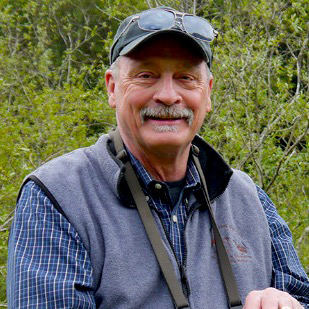 06/21/2024
06/21/2024
By: Wendell Gilgert, Stewardship Ecologist, Point Blue
Sometime in the late 1970s and early in my natural resources career, I secured a copy of Aldo Leopold’s Round River, a collection of essays edited by his son, Luna Leopold, a few years after Aldo passed. In his essay Round River–A Parable, Leopold writes:
One of the penalties of an ecological education is that one lives alone in a world of wounds. Much of the damage inflicted on the land is quite invisible to the layman. An ecologist must either harden his shell and make believe the consequences of science are none of his business, or he must be the doctor who sees the marks of death in a community that believes itself well and does not want to be told otherwise.
Leopold’s Round River essay initiated my lifelong effort to understand what Leopold may have meant when he used the term “land doctor” when describing the “penalty” of an ecological education. Over the past several years, that quest has included conversations with the Aldo Leopold Foundation‘s Executive Director, Buddy Huffaker, Leopold’s biographer, Curt Meine, and members of the Leopold family, including his late daughter, Estella Leopold.
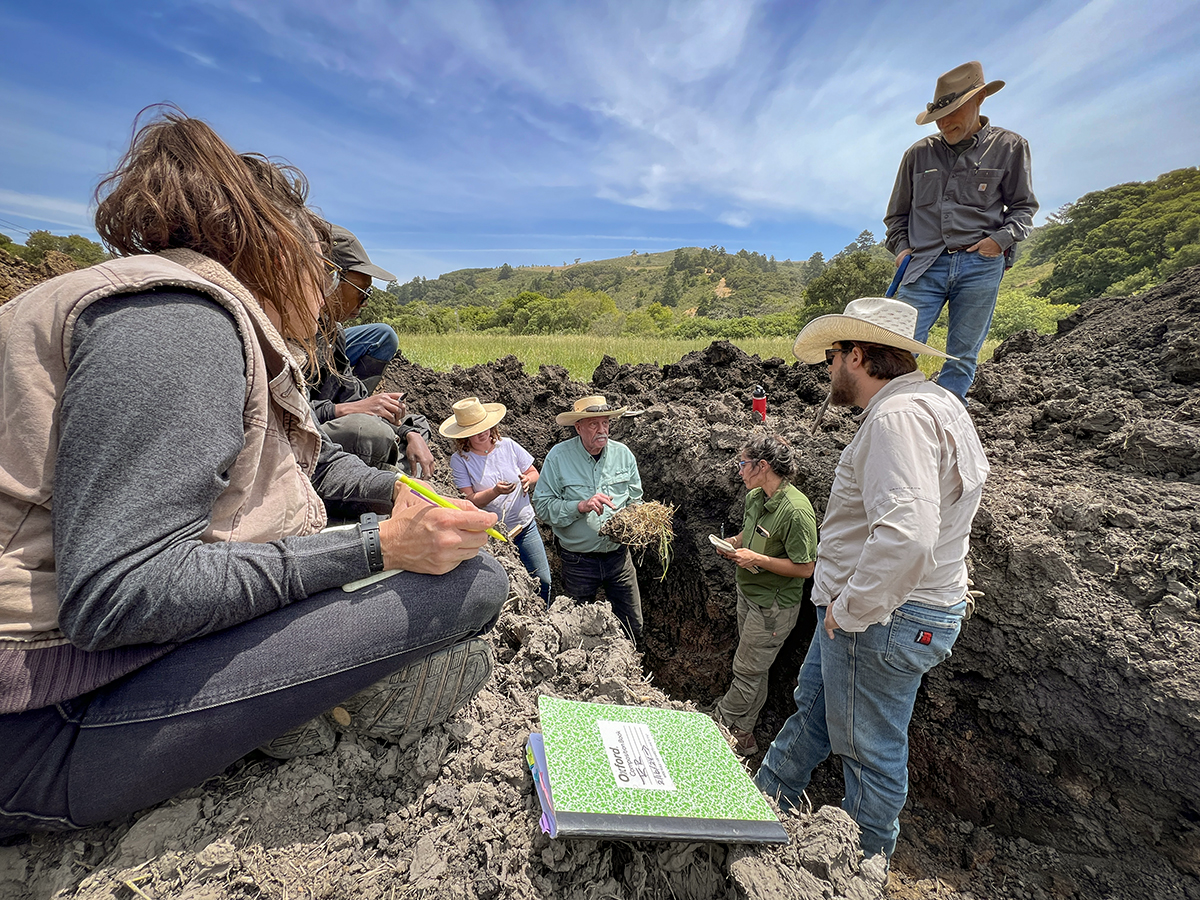
Photo by William Milliot
A medical doctor uses their extensive accumulated academic knowledge, practical skills, and understanding of the human body’s 11 organ systems (e.g. digestive, muscular, circulatory, reproductive) to examine, observe, test, diagnose, treat, and follow-up with their patients. All humans have the same 11 systems in their bodies!
Similarly, the land has a series of systems, cycles, and processes embedded in land across all of the world’s geographies. Those systems, cycles, and processes are essential to land health. As with a medical doctor, a land doctor must use both general and specialized skills to assess the health of those systems, cycles, and processes including:
Water Cycle: the biogeochemical cycle that involves the continuous movement of water on, above, and below the surface of the Earth.
Nutrient cycles: the cyclic processes of carbon, nitrogen, oxygen, calcium, potassium, and phosphorus that move nutrients from the environment to living organisms and back again.
Biotic Integrity: biological food chains, webs, and other interactions.
Energy Flow: the unidirectional movement of solar energy as it moves through natural systems.
Plant Succession: the ecological process of change in a plant community that occurs over time in response to natural and human factors.
Pollination: the process of transferring pollen from the male part of the flower to the female part. Pollination can occur through self-pollination, by wind and water, or by animal pollinators (birds, bats, bees, and others).
Photosynthesis: the process by which plants use sunlight, water, and carbon dioxide to create oxygen and energy in the form of sugar.
Erosion and Sedimentation: the process of wind, water, ice, or gravity wearing away the land’s surface. Sedimentation is the process of depositing the detached particles from erosion into water bodies or on land.
Migration, Transition, and Dispersion: the movement of plants by seeds, pollen, and animals by wing, hoof, and fin, episodically or seasonally to secure more favorable life history requirements of food, cover, water, and space.
Natural Disturbance: floods, drought, fires, insect or pest infestations, tornados, avalanches, landslides, windstorms, and tsunamis.
Human Influence: including development, construction, farming, ranching, and forestry.

Photo by William Milliot
As in the case of a medical doctor, a land doctor must have academic experience with both physical earth sciences (geology, hydrology, edaphology, etc.) and ecological and biological sciences (mammalogy, entomology, ornithology, etc.).
Like a medical doctor, a land doctor uses the same protocols: examine, observe, diagnose, treat, and follow-up with their patient. In engaging those protocols, a doctor, whether for humans or land, must actively engage all five senses: sight, hearing, taste, smell, and touch to understand the patient in front of them.
Observations and examinations: a land doctor must engage all senses when visiting the “Patient”—a farm, ranch, forest, development, or natural habitat.
When walking the land, engaging with all five senses will provide a heightened awareness of the world around, over, and under you. It will allow you to learn, see a story, recall the past, relish the moment, and think about tomorrow and beyond.
Listen.
Can you hear the calls of California quail, the singing of songbirds, the drumming of woodpeckers, the hammering of a flicker on a dying oak, the chorus of a hundred tree frogs, or the rhythmic chirps of crickets and chewing of grasshoppers, rising and falling with the temperature of the day?
Rustling of lizards, the warble of a shrew, the crunch of a digging gopher, the crawl of tarantulas, and the Sky Dance of Wilson’s snipe or woodcocks, other sounds of mysterious origins? Barks of a tree squirrel silenced by the scream of a red-tailed or red-shouldered hawk?
What about the buzz, hum, and rustle of pollinators and other invertebrates?
Oh! In the distant spring or autumn sky, the call of the Sandhill Crane, referred to as the “The Trumpet in the orchestra of evolution” by Aldo Leopold as they leave their invisible tracks in the sky.
Can you sit quietly in a copse of cottonwood or a grove of aspen as their leaves quake in a barely felt breeze? They do not sound the same! Try to keep the goosebumps from appearing on your neck or a smile from your face.
What do they represent?
There is a vocabulary in the natural world that is here if you listen, little understood, but largely unheard, and mostly unknown by modern people.
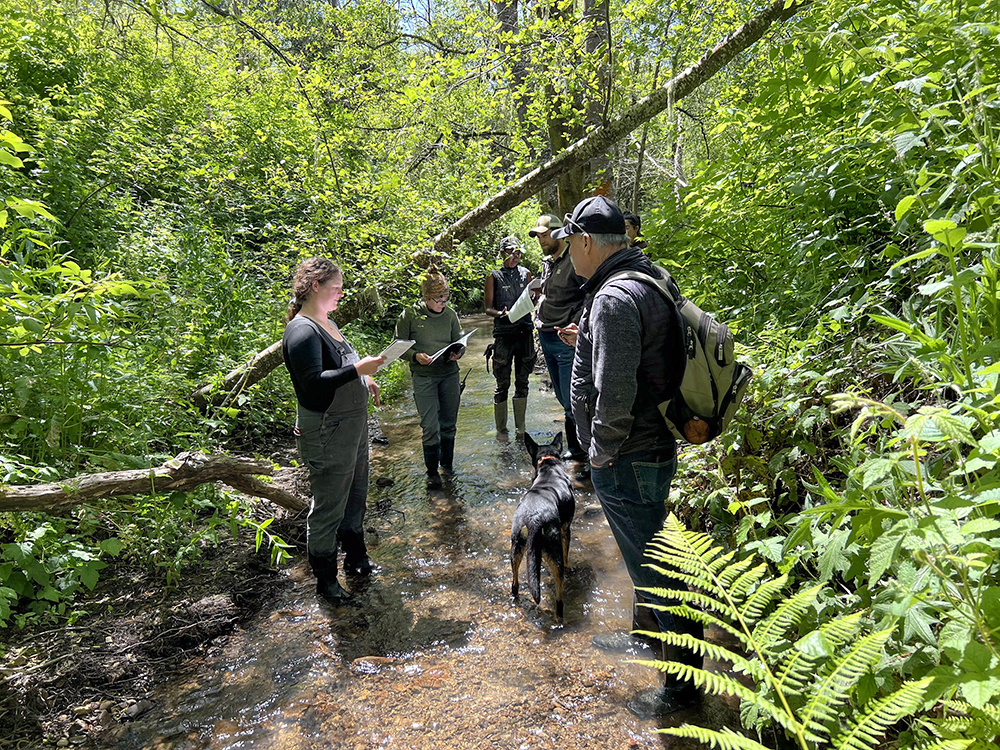
Photo by Wendy Millet
Look.
Everywhere you look, there is so much to see. Patterns on the land speak of past actions and future possibilities.
Under foot, the smallest fragment of rock on its tiny pedestal offers silent testimony to the washed downstream soil. May even reach the ocean, the cradle of life.
Further down in the soil lie billions of individuals, Monera, Plants, and Animals.
Winter is broken by the early emergence of an overwintering new queen bumble bee or is it by the popping of the first green leaves of a buckeye? The bloom of a Lowland Shooting Star whose bloom means winter is in retreat.
The rhythm of the seasons: What types of native trees and shrubs do you see?
How long have they been here? What role do they play in this land’s cycle of life?
Can you see algae, lichens, mosses, ferns in the crevasses and shadows of trees, shrubs, and rock? Or on north slopes where direct sun seldom shines? Sedges, rushes in soggy soil, seeps, springs, and creekside? What are they trying to show you about the flow of energy, the cycle of nutrients on this land? What about grass? Photosynthesis…grasses and all other plants scrubbing the atmosphere of carbon dioxide, while also converting sunlight into energy, making sugar to feed, maintain, and sustain above and underground life.
Touch.
What does the earth feel like under your feet? Is it spongy or hard? Can you feel the humidity rise as you enter a riparian or freshwater marsh on a summer day? Can you walk through a patch of vegetation without getting stuck, poked, or stung? Can you avoid the prickle of nettles?
Taste.
Are the grasses sweet, do the legumes (clovers) taste like peas?
Is the water potable? Does it taste sweet, slightly salty, or acrid? Are you tempted to taste the leaf of a California Bay Laurel or the invasive but delicious fruit of the Himalayan Blackberry?
Smell.
What does the soil smell like?
Can you detect the petrichor (smell of newly wetted soil) of an approaching or new precipitation event?
What unique, perhaps slight sulfur smell is emanating from a freshwater marsh?
In farm country, the aroma of fresh cut hay, harvested fruit, and nut orchards, the crush of this year’s grapes? Are there nearby dairies where the smell of manure or fermenting corn silage emanate?
These are only a few of the sensory inputs of the land.

Photo by William Milliot
So, how do we diagnose and then prescribe treatment for land that has been wounded or is in ill health? Here is a smattering of elements a land doctor can look for to assist in their diagnosis of land health:
Soils
- Two soil surface organic horizonation is visible on the soil surface
- “Dreadlock” roots are evident, a sign of healthy soil microorganisms
- Soil aggregate stability
- High percent (but not entire) vegetative cover
- Soil has structure (blocky, not massive)
- Evidence of soil surface sheet erosion as evidenced by small shards of rock on a pedestal of soil
Water
- Water infiltration at the expected rate for textural class (sand, silt, clay, loam)
- Water runoff is mostly clear
- Waterways are vegetated
- Water in on-farm or ranch streams or ponds support beneficial invertebrates
- Water-born pollutants (pathogens, sediment, pesticides, fertilizers) are minimal or absent

Photo by Mukethe Kawinzi
Fish and Wildlife
- Abundant and diverse spiders (the grizzly bears of terrestrial invertebrate world)
- Abundant and diverse Odonatans (dragon and damsel flies) (the eagles of the aerial invertebrate world)
- Presence, diversity, and abundance of beneficial insects (ladybird beetles, predacious and parasitic wasps, lacewings, etc.)
- Abundant and diverse native pollinating bees
- Majority of bird focal species occupy fields, wetlands, pastures, and surrounding areas
- Fish passages on waterways are not impeded or blocked
Vegetation
- Monocultural cropping is minimized
- Crop rotation is utilized
- Conservation cropping practices are utilized (cover crop, manure crops)
- Plant Succession is evident on surrounding wildlands with appropriate classes represented
- Invasive and noxious weeds are controlled
- Diverse plant functional groups exist
- Photosynthesis is active and brix are appropriate for vegetative state observed or sampled
- Percent green (growing) cover
Air
- Minimal dust, smoke, exhaust creation, agricultural odors
- Maximum vegetative cover on access roads, farmsteads, and between rows of crops, vineyards, and orchards
- Minimal air particulate matter from livestock operations
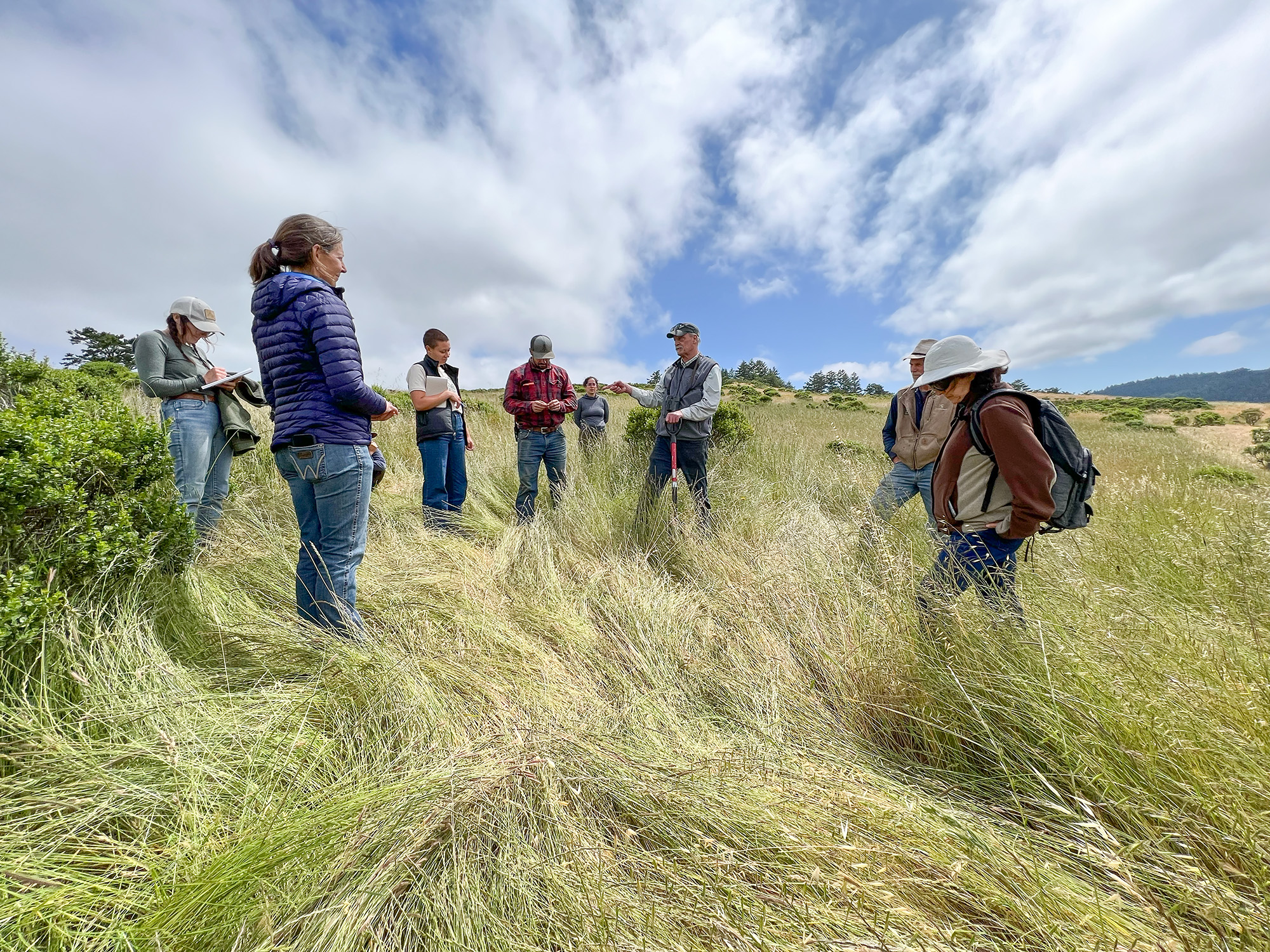
Photo by William Milliot
Finally, once the land doctor has diagnosed the state of the land’s health, there are more than 170 different conservation practices, complete with standards, specifications, and drawings that can serve as the “pharmacy” to treat the land patient.
We have a long way to go to completely flesh out the concept of being a land doctor, but Leopold was also quoted as saying, “Once you learn to read the land, I have no fear of what you will do to it, or with it. And I know many pleasant things it will do to you.”